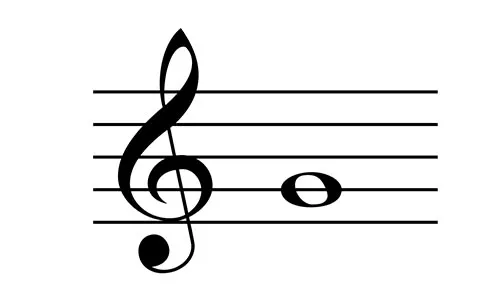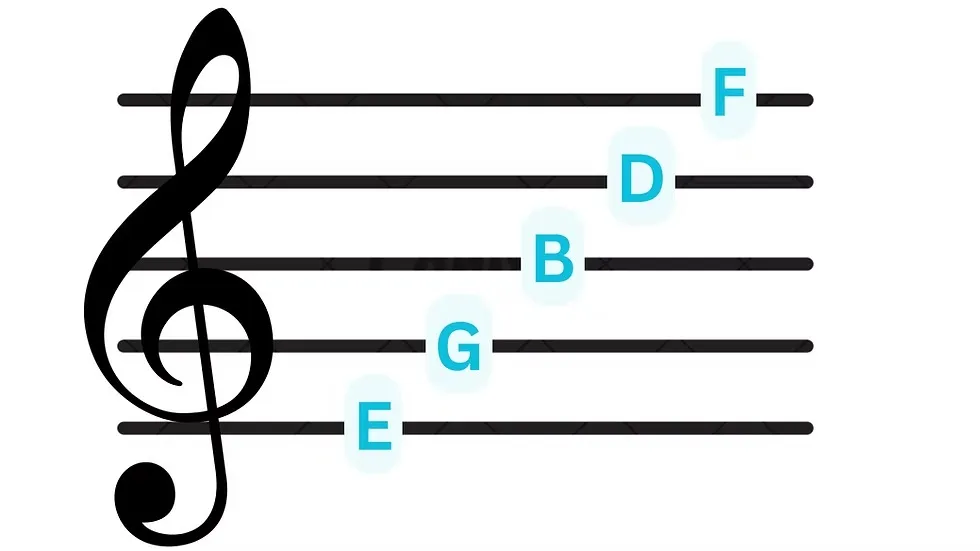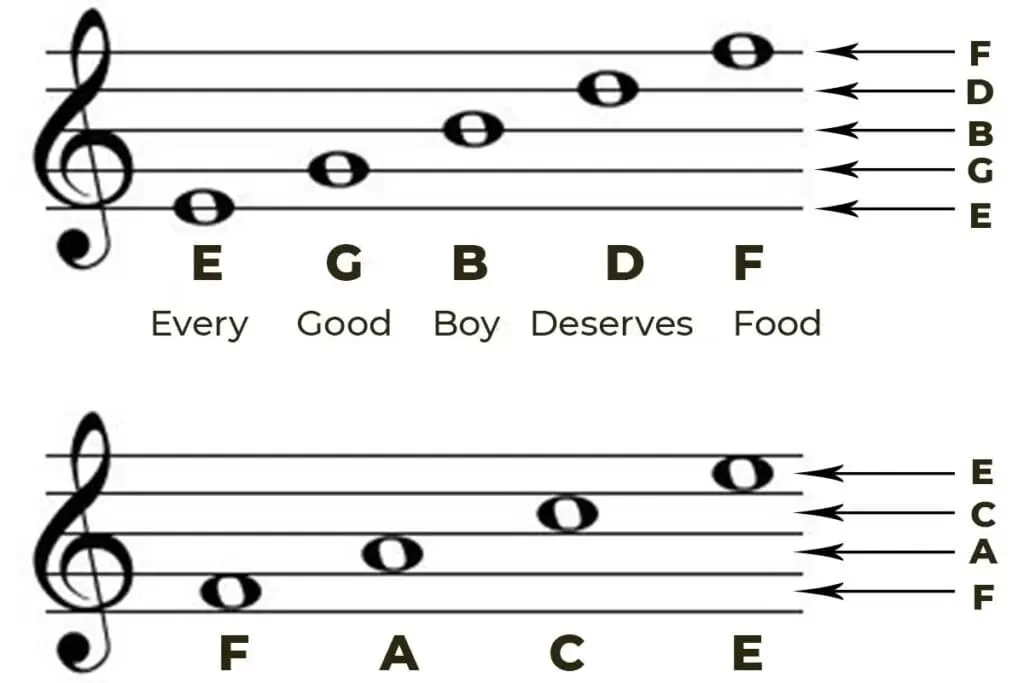The G clef, commonly known as the treble clef, is one of the most fundamental symbols in Western music notation. Whether you’re a beginner learning how to read sheet music or an advanced player analyzing orchestral scores, understanding the G clef is essential. This article will explore the G clef in depth—its definition, function, historical background, practical applications, and more.
What Is the G Clef?
The G clef symbol (𝄞) is a musical notation symbol placed at the beginning of a staff to indicate the pitch of written notes. Its name comes from its purpose: it designates the note G above middle C. The symbol wraps around the second line of the five-line staff, which then represents that G note. From that fixed reference point, all other notes are identified.

This clef is most often referred to as the treble clef, especially in the context of modern music education. While “G clef” is the more technical term, both are used interchangeably.
>>View more: List 99+ Music Symbols and Their Functions
History and Origin
The G clef has a fascinating history. It originated from the stylized letter “G” used by medieval musicians to mark the G note on a staff. Over centuries, this letter evolved in shape, eventually becoming the ornate symbol we recognize today.
In early notational systems such as neumes or Gregorian chant, clefs were written in simpler forms. With the development of the five-line staff system around the 11th century (thanks largely to Guido of Arezzo), the G clef was formalized and began to take on a more decorative form.
Today’s modern G clef is the result of typographical refinement, but it still carries the function it held hundreds of years ago: anchoring the note G on the staff.
>>Learn more about other music clef symbols
Function of the G Clef
The G clef’s primary function is to define the pitch of the notes on the staff. By anchoring the G note to the second line from the bottom, it sets a reference point for all other notes.
- Second line = G4 (G above middle C)
- The lines from bottom to top represent: E, G, B, D, F
- The spaces from bottom to top represent: F, A, C, E

Thus, the clef is essential for interpreting where notes fall on the pitch spectrum. Without it (or another clef), the staff lines and spaces would have no defined pitch.
Instruments That Use the G Clef
The G clef is used by many high-pitched instruments and vocal parts, especially in classical and contemporary notation. Some of the most common include:
- Instruments:
- Violin
- Flute
- Clarinet
- Oboe
- Trumpet
- Saxophone
- Guitar
- Ukulele
- Piano (right hand)
- Voice Types:
- Soprano
- Mezzo-soprano
- Alto
- Tenor (often written an octave higher in treble clef)
Even instruments with a broader range, like the piano, use the G clef in conjunction with the F clef (bass clef) to cover both high and low notes.
G Clef vs. Other Clefs
Music uses several clefs to cover different pitch ranges. Here’s how the G clef compares:
| Clef | Anchors Which Note? | Common Use |
| G Clef | G4 (2nd line) | Treble instruments, higher voices |
| F Clef | F3 (4th line) | Bass instruments, left hand of piano |
| C Clef | C4 (varies by position) | Viola (alto), cello/tenor voice (tenor clef) |
The C clef is movable, appearing on different lines depending on the voice or instrument. In contrast, the G clef is fixed on the second line, making it more standardized in modern notation.
Variants and Notational Styles
While the symbol itself is consistent, slight variations appear depending on:
- Engraving styles (e.g., Baroque vs. Modern manuscripts)
- Handwritten vs. Printed notation
- Digital fonts in notation software like Finale, Sibelius, or MuseScore
Historically, earlier G clefs might look like ornate loops or elongated curves, while modern notation tends toward a cleaner, spiral design. Regardless of style, they all serve the same function—identifying the G note.
How to Read Notes in the G Clef
The G clef defines a fixed note system on the five lines and four spaces of the staff. Here’s how to identify the notes quickly:

Lines (Bottom to Top)
- E – G – B – D – F
Mnemonic: Every Good Boy Deserves Fudge
Spaces (Bottom to Top)
- F – A – C – E
Mnemonic: FACE (spells a word!)
This system makes it easier for learners to recognize notes and sight-read music. Consistent practice with flashcards, reading exercises, and real sheet music helps reinforce these associations.
Common Mistakes and Misconceptions
Some pitfalls to watch out for:
- Mistaking the G clef for the F clef: Always look at which line the clef wraps around.
- Misplacing the clef on the staff: The G clef must center on the second line to function properly.
- Reading G clef as if it’s for low-pitched instruments: It represents higher pitches; using it for bass instruments would lead to wrong note interpretation.
- Octave confusion: For example, guitar music is written in treble clef but sounds an octave lower than written.
Fun Facts and Trivia
- The G clef is sometimes referred to as the violin clef due to its primary use in violin music.
- Historically, there were movable G clefs, placed on different lines for different voices.
- Famous composers like Mozart and Bach wrote entire works using only the G clef—especially for solo keyboard or melodic instruments.
- Many children’s music books introduce the G clef first because it’s tied to easy-to-play instruments like the recorder and piano (right hand).
Summary and Learning Resources
To recap:
- The G clef sets the second staff line to G4, establishing all other note positions.
- It’s vital for reading music for high-pitched instruments and voices.
- Recognizing and interpreting the G clef correctly allows musicians to play music accurately and confidently.
To deepen your understanding, check out our:
- Interactive note reading exercises
- Printable G clef worksheets
- Clef comparison chart
- Beginner piano and violin tutorials
Mastering the G clef is a cornerstone of reading music. With practice and the right guidance, you’ll soon navigate treble clef notation with ease and confidence.
Let me know if you’d like this adapted into a printable PDF or want companion articles for the F clef or C clef symbols.

Evan Carter is an American music educator. With a background in Musicology and over 10 years of experience, he specializes in music theory and notation. Evan creates clear, accessible content to help learners of all levels understand the language of music through symbols, structure, and sound.

